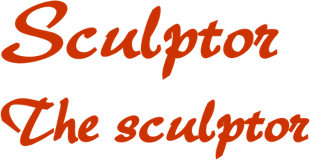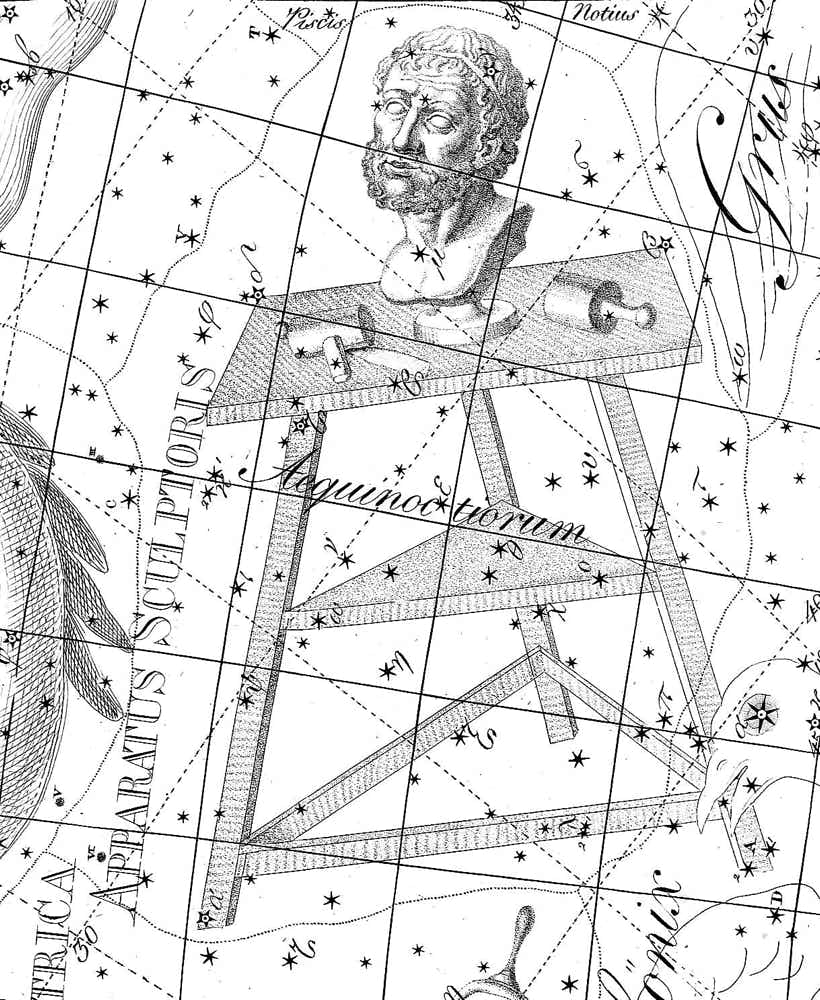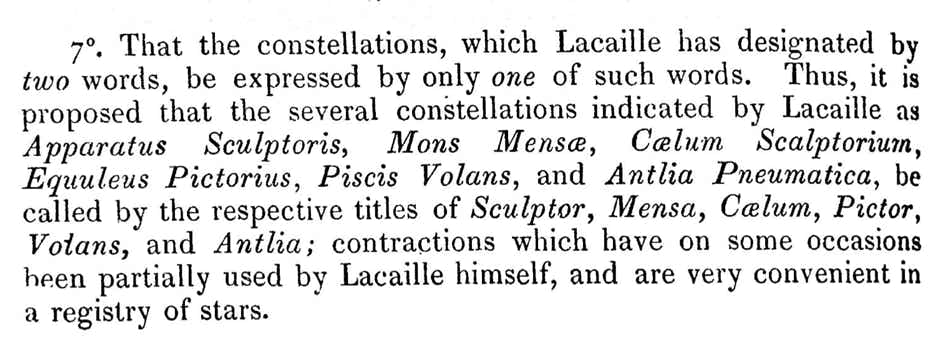
Genitive: Sculptoris
Abbreviation: Scl
Size ranking: 36th
Origin: The 14 southern constellations of Nicolas Louis de Lacaille
A faint constellation south of Cetus and Aquarius, invented by the French astronomer Nicolas Louis de Lacaille during his mapping of the southern skies in 1751–52. His original name for it, given on his planisphere of 1756, was l’Atelier du Sculpteur, the sculptor’s studio, although in the accompanying star catalogue he spelled (or mis-spelled) the first part of the name as ‘attelier’. As described by Lacaille, it consisted of a carved head on a three-legged table, with the artist’s mallet and a chisel on a block of marble next to it (although his illustration actually showed two chisels). On Lacaille’s 1763 planisphere the title was Latinized to Apparatus Sculptoris.
Johann Bode in 1801 dispensed with the block of marble and moved the sculptor’s tools to the top of the table along with the carved bust, as seen on the illustration below. In place of the marble block he created the constellation Machina Electrica, but that figure never achieved wide currency.
In 1844 the English astronomer John Herschel proposed shortening the name to Sculptor. This suggestion was adopted by Francis Baily in his British Association Catalogue of 1845, and the constellation has been known simply as Sculptor ever since.
Sculptor is the largest of Lacaille’s 14 inventions, as defined by the modern constellation boundaries, but its brightest stars are only of fourth magnitude.
Sculptor, shown under the name Apparatus Sculptoris, on Chart XVII
of the Uranographia of Johann Bode (1801).
Click here for Lacaille’s original depiction of the constellation.
Chinese associations
In Chinese astronomy, five stars in this area were seen as forming a hook shape that represented Fuzhi, a sickle used for harvesting crops. As is often the case with such far-southern Chinese constellations, the exact stars involved are difficult to identify with any certainty; in fact some sources place it farther north in Cetus. Another three stars in this area formed Fuyue, an axe for executions or cutting crops, but opinions differ as to whether this constellation lay in western Sculptor or farther north in Aquarius.
Similar questions concern Bakui, a constellation representing a net for catching birds or possibly the official in charge of the catch. Some authorities place Bakui in Sculptor, extending southwards into Phoenix, while others think it lay farther north in Cetus. Most likely the Chinese themselves used different stars at different times to form these constellations.
© Ian Ridpath. All rights reserved
Lacaille’s description of Sculptor, which he referred to in the text as L’attelier du Sculpteur, from the Histoire de l'Académie royale des sciences for 1752 (actually published in 1756).
John Herschel proposed shortening the names of six of Lacaille’s southern constellations from two words to one in a paper published in the Monthly Notices of the Royal Astronomical Society in 1844. His proposal was readily adopted, and we now know these constellations as simply Antlia, Caelum, Mensa, Pictor, Sculptor, and Volans.





